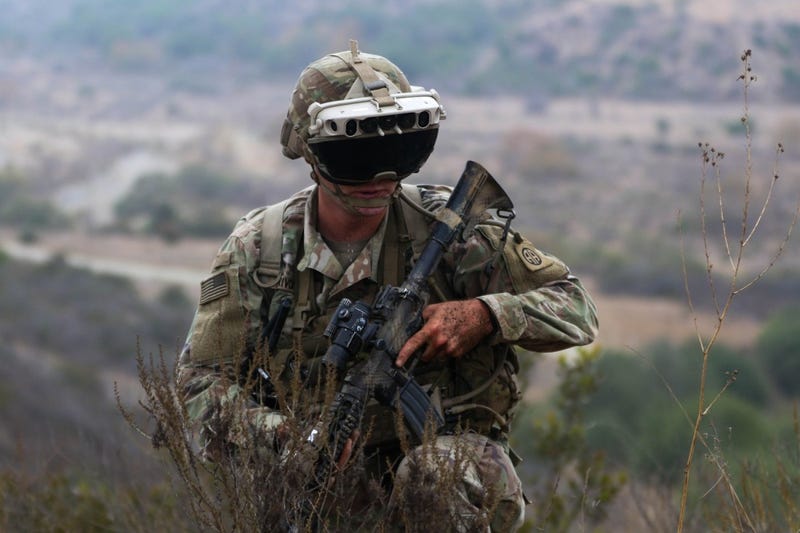
Those with enough gray in their hair may recall numerous endeavors in which the Department of Defense attempted to integrate advanced electronics and technology into infantry squads and platoons. The concept is well known by now, to network soldiers together within a networked, fast-paced battlefield environment.
As computers and augmented reality visors get implemented into the infantry, soldiers quickly find ways to break the equipment, are burdened by the additional weight, and programs like Land Warrior then go by the wayside only to be resurrected in a different form a decade later.

The latest incarnation of this future war concept is called the Integrated Visual Augmentation System or IVAS which ideally will work like a heads-up display as seen in first-person shooter video games or works of science fiction such as Ghost in the Shell where the user has layers of virtual reality layered over their view of the ground in front of them displaying adjacent units, direction, waypoints, and will also be married up with night vision and thermal imagery to help troops see in the dark, through smoke, and shoot around corners.
The 82nd Airborne is currently testing the IVAS in the field as a part of Project Convergence 2022, which also incorporates the UK and Australia. According to information that has leaked out to the press, the IVAS is not getting the best of reviews.
After less than three hours of use, most soldiers testing the IVAS experience eyestrain and nausea. IVAS is based off of Microsoft's HoloLens, which was not initially designed for military use.
“Obviously, it’s going to take time, because technology takes a while, but the concept of this IVAS and the concept of the technology of the future would definitely improve and make the Army a lot more lethal,” said 82nd Airborne soldier Pfc. Nicholas Quintero in a recent Army press release.
It is true that it took many iterations of trial and error before the Army arrived at today's functional helicopters and M16 family of rifles, amongst other military equipment, but what the future holds for IVAS remains to be seen.
Want to get more connected to the stories and resources Connecting Vets has to offer? Click here to sign up for our weekly newsletter.
Reach Jack Murphy: jack@connectingvets.com or @JackMurphyRGR.


